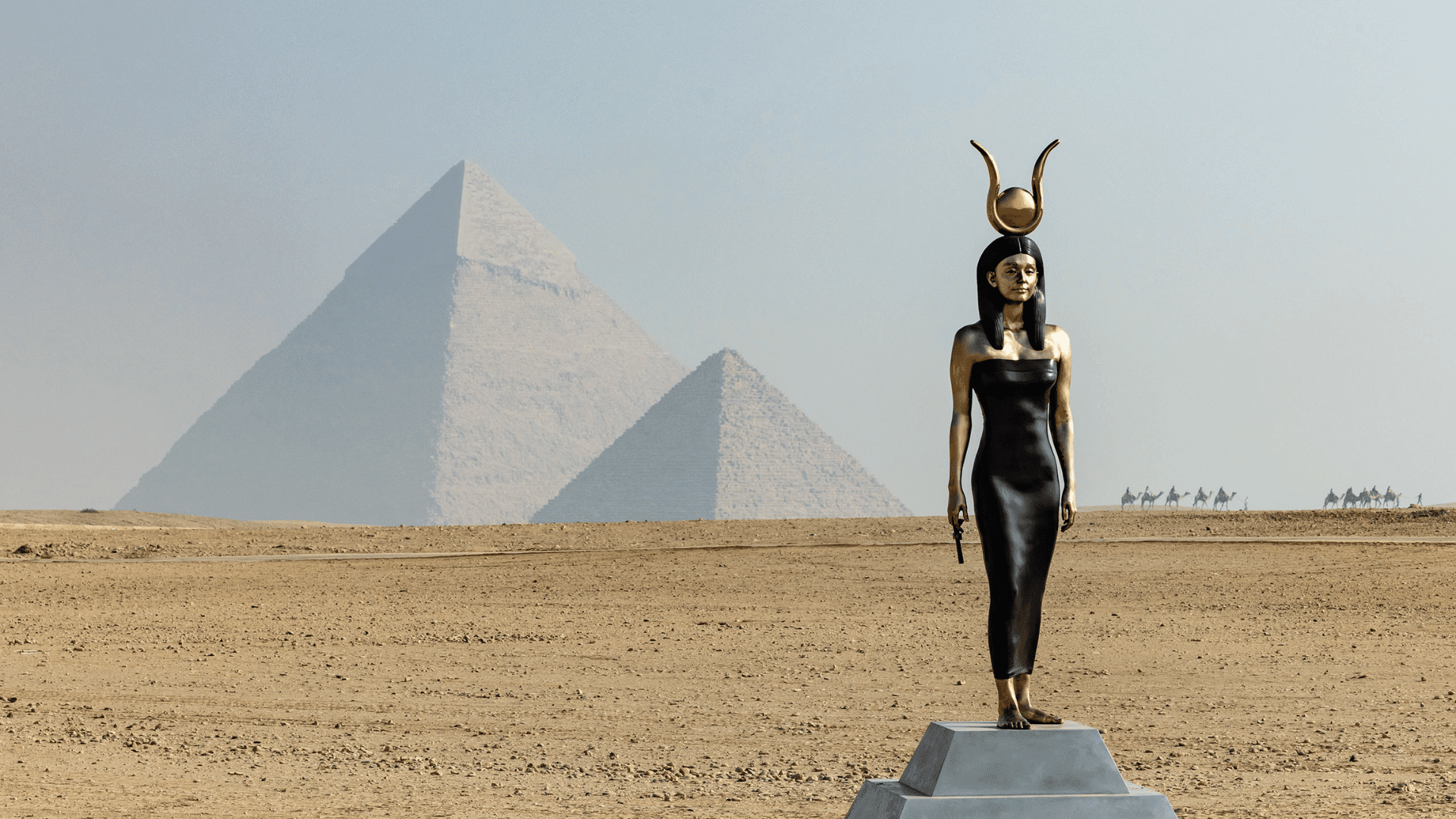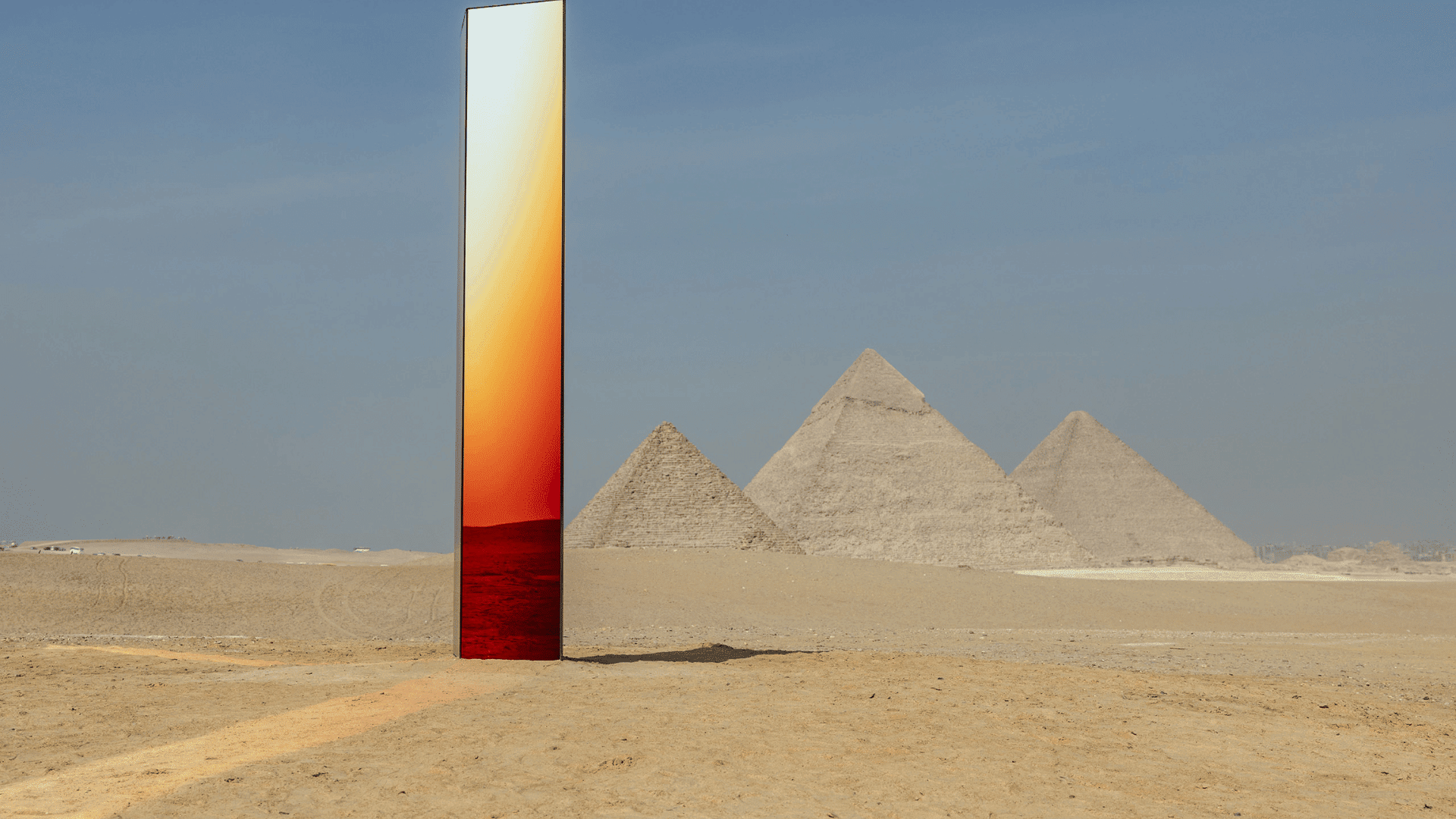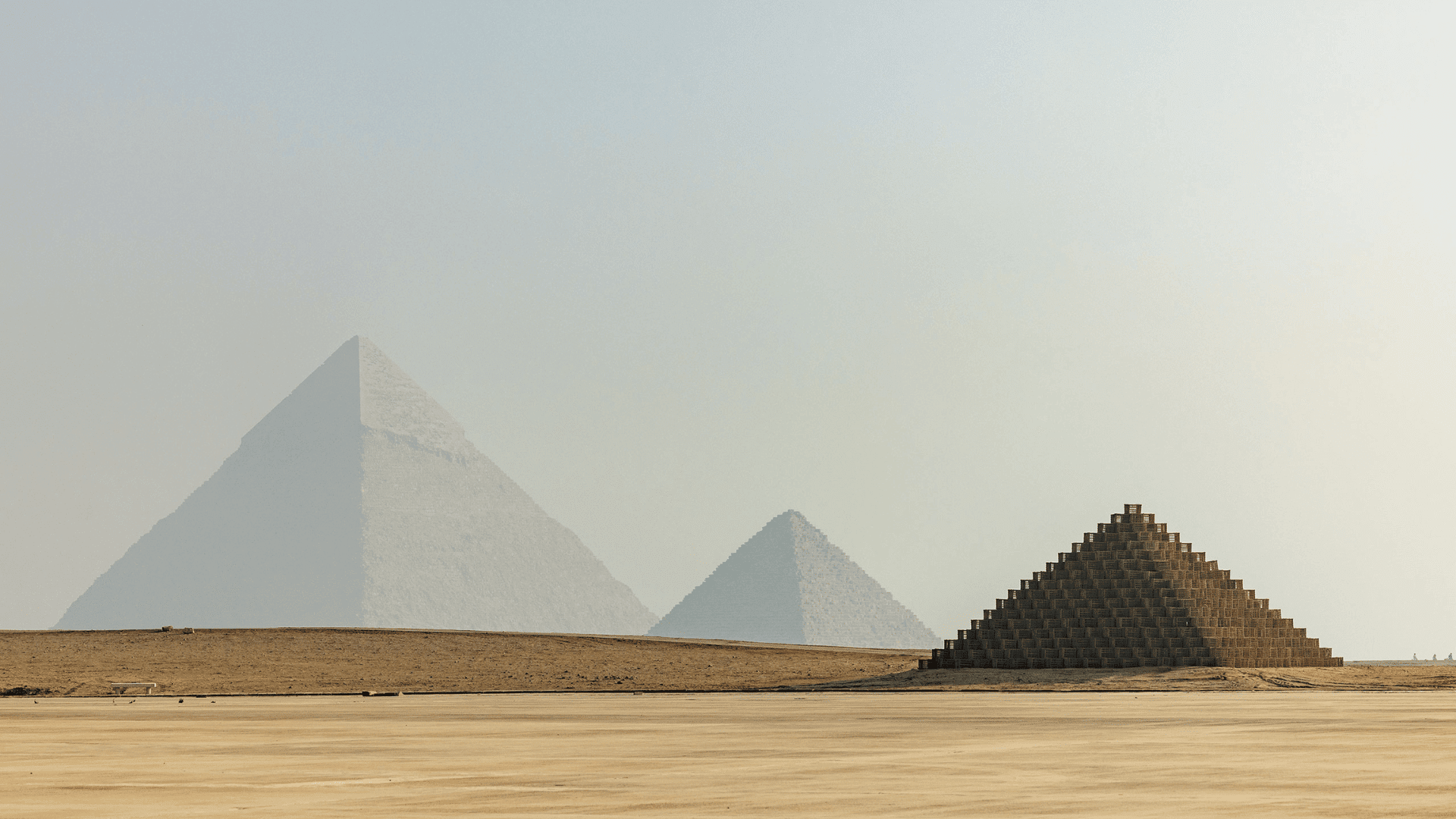This year marks the fourth iteration of the Forever is Now art exhibition, the only contemporary art exhibition to take place at the 4,500-year-old Pyramids of Giza and its surrounding plateau.

With a total of 14 installations in its fourth iteration, the exhibition was originally conceived by French-Egyptian curator and collector Nadine Abdel Ghaffar, the founder of Culturvator/Art of Egypte.
The exhibition brings together a series of large-scale sculptures and installations by 14 contemporary artists from around the world. All the artworks share an interactive component, offering new ways to experience both the exhibitions and the monuments.
The goal of the show is to put on “ground-breaking exhibitions that change… the way the world perceives contemporary art in Egypt”. To accomplish this, the exhibition presents contemporary Egyptian art in heritage sites to show links between Egypt’s history and modern art through the connections between traditions, land, spirituality, and technology.

The show also aims to “bring together artists from around the world to reflect on the enduring legacy of one of humanity’s most compelling and mysterious structures”.
“The pyramids have withstood wars, earthquakes, and plagues. They are a sign of unity and that humanity will prevail. More than ever it’s important to continue with this work.” stated Ghaffar.
One piece featured in the exhibition is a statue of the goddess Hathor titled Egyptian Woman in the Form of Goddess Hathor, which is aligned perfectly with the Great Pyramid. The piece was created by American artist Carole A. Feuerman to celebrate the deity of music, love, fertility, and motherhood.

Other noteworthy pieces in the collection include Dutch artist Sabine Marcelis’s Ra, which is a tribute to the sun god and is also displayed at the birthplace of the sundial. The sculpture, which is made of laminated solar glass, produces a footprint of light that changes as the day progresses while also harnessing energy to illuminate itself after dark.
Saudi artist Rashed Al Shashai created a piece called The Translucent Pyramid, which is a pyramid made of palm fronds and uses the ancient Egyptian wicker weaving method. Another pyramid-inspired exhibition is Mohamed Banawy’s installation As Above, So Below (Dome of Starry Sky). The piece consists of a matrix of starfish-shaped sculptures mounted on rods and refers to the second verse of the Emerald Tablet, a Hermetic text said to have been written by the Egyptian god Thoth.

Argentinian artist Pilar Zeta’s Mirror Gate is an invitation for viewers to look at their reflection in front of the pyramids. Described by the artist as “an inter-dimensional gateway between time and space”, this piece is meant to evoke the idea of a portal connecting the past and present.
Similarly, the installation by Brazilian artist Artur Lescher titled Observatory Meta Oiko is a prismatic sculpture created from reflecting and translucent surfaces. The piece invites visitors to view the historic pyramids from a panoramic perspective.
UAE artist Azza Al Qubaisi’s Treasures blends the pyramid’s geometric volumes with the shapes of the surrounding sand dunes in a maze-like installation that visitors can walk through.
Also adding art to the surrounding landscape is Greek artist Costas Varotsos whose installation titled “Horizon” eight metallic rings that are half-filled with layers of glass. Against the desert landscape, the glass textures give the impression of water which creates an illusory horizon that visually unites the Pyramids with the River Nile.





